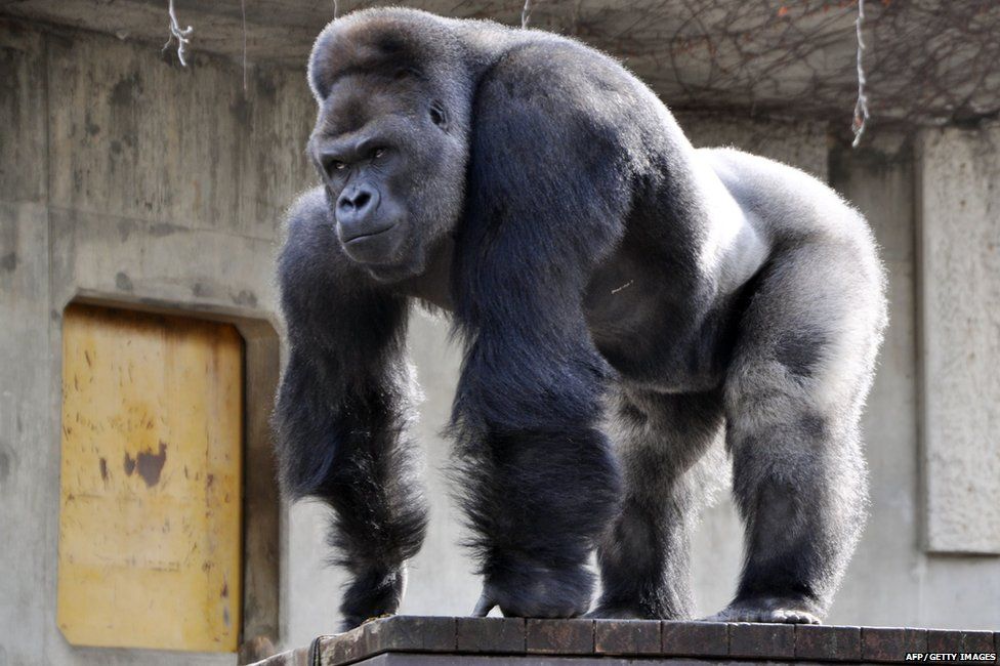In the dense jungles of Central Africa, amidst the lush foliage and echoing calls of the wild, roams one of the most awe-inspiring creatures on Earth – the silverback gorilla. Majestic, powerful, and intelligent, these magnificent primates are icons of the natural world, captivating the hearts and minds of all who encounter them. In this article, we delve into the fascinating world of the silverback gorilla, exploring its behavior, social structure, habitat, and conservation status.
Physical Characteristics
The silverback gorilla, scientifically known as Gorilla beringei beringei, is a subspecies of the eastern gorilla and is the largest and most imposing of all primates. Males typically weigh between 300 to 400 pounds (136 to 181 kilograms) and stand up to 5 to 6 feet (1.5 to 1.8 meters) tall when upright. What distinguishes the silverback from other members of the troop is the striking patch of silver-gray hair that adorns its broad back, hence its name.
Aside from their distinctive silver saddles, silverback gorillas possess robust builds with broad chests and massive muscles, indicative of their immense strength. Their large, hairless faces are adorned with a prominent brow ridge and powerful jaws filled with sharp teeth, which they use for both communication and defense.

Behavior and Social Structure
Silverback gorillas live in cohesive family groups known as troops, led by the dominant silverback male. These troops typically consist of multiple females, their offspring, and occasionally subordinate males. The silverback serves as the protector and leader of the group, responsible for guiding them through their territory, defending against threats, and mediating conflicts within the troop.
The bond between members of a gorilla troop is incredibly strong, characterized by intricate social dynamics and communication. Gorillas communicate through a combination of vocalizations, gestures, and facial expressions, including grunts, hoots, chest-beating, and elaborate displays such as charging and chest thumping. These forms of communication help maintain order within the troop and reinforce social bonds.
Habitat and Diet
Silverback gorillas are primarily inhabitants of montane and lowland forests in Central Africa, including countries such as Rwanda, Uganda, and the Democratic Republic of the Congo. Their habitat consists of dense vegetation, providing ample food sources and shelter from predators.
These magnificent creatures are primarily herbivorous, with a diet consisting mainly of fruits, leaves, stems, and occasionally insects. Their strong jaws and teeth are well-adapted for chewing tough vegetation, allowing them to extract nutrients efficiently from a variety of plant sources.
Conservation Status
Despite their formidable presence, silverback gorillas face numerous threats to their survival, primarily due to habitat loss, poaching, and disease. Deforestation, driven by human activities such as logging, agriculture, and infrastructure development, has led to the fragmentation of gorilla habitats, isolating populations and reducing their access to food and mates.
Poaching for bushmeat and the illegal wildlife trade also pose significant threats to silverback gorillas, as they are targeted for their meat, body parts, and infants, which are often sold as pets or used for traditional medicine.
Furthermore, the transmission of diseases from humans, such as respiratory infections and the Ebola virus, can devastate gorilla populations, as they have no natural immunity to these pathogens.
In response to these challenges, numerous conservation organizations and government agencies are working tirelessly to protect silverback gorillas and their habitats. Efforts include establishing protected areas, implementing anti-poaching patrols, conducting research to better understand gorilla behavior and ecology, and promoting eco-tourism as a sustainable source of income for local communities.
Conclusion
The silverback gorilla stands as a symbol of strength, resilience, and the importance of conservation efforts in preserving Earth’s biodiversity. As stewards of our planet, it is our responsibility to ensure the survival of these magnificent creatures and the ecosystems they inhabit. By supporting conservation initiatives, raising awareness, and advocating for sustainable practices, we can secure a brighter future for silverback gorillas and all living beings that share our planet.









